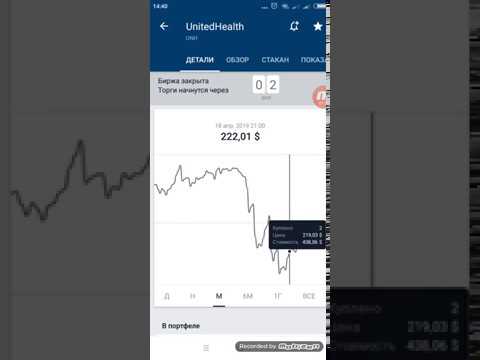Is the Golden Ratio a Myth?

The golden ratio isn’t only a high mathematical theory; it appears in everyday life. Human bodies that do not adhere to golden proportions example of golden ratio in nature appear to be formless. Your navel is positioned such that the ratio of the short half to the long half equals the golden ratio.
It can be a helpful when creating a grid for a layout, finding the perfect cropping for a photo, or figuring out sizes for type hierarchy when featuring content, just to name a few. Overall, it’s an interesting way to look at great design through a mathematical lens and we think it’s fascinating to identify where and how it is used in the world around us. The Greeks formulated the golden ratio, and the application of this mathematical phenomenon is seen in art and architecture to this day. Earlier, esthetics was used to analyze beauty with harmony as its foundation. It’s pretty simple—just organize the parts, which are usually dissimilar, into a specific exact ratio so that they meet and create beauty. Similar to the spiral patterns of the seed heads, the pods of the pine cone are also arranged in a Fibonaccian spiral.
Golden Ratio in Architecture
The answer may lie in a mathematical concept known as the Golden Ratio, which has fascinated scholars, artists, and architects for centuries. When month three rolls around, the original pair of rabbits produces yet another pair of newborns while their earlier offspring grow to adulthood. This leaves three pairs of rabbit, two of which will give birth to two more pairs the following month for a total of five pairs of rabbits. The Fibonacci sequence is a recursive series of numbers where each value is determined by the two values immediately before it.
High-gain printed monopole antenna with dual-band characteristics … – Nature.com
High-gain printed monopole antenna with dual-band characteristics ….
Posted: Tue, 20 Jun 2023 09:22:33 GMT [source]
Why don’t you go into the garden or park right now, and start counting leaves and petals, and measuring rotations to see what you find. Hurricanes and cyclones all display the golden ratio at its most ferocious — whereby the perfect number can be seen spiraling around the eye of a perfect storm. Take any number in the sequence, then divide it by the number before it, and you will get 1.6.
Fibonacci Spiral in Pinecones
Simply, the Fibonacci Sequence is a set of numbers that exist in nature, e.g., the total sides of a banana (unpeeled), and the petals in some flowers are Fibonacci. The Golden ratio can be found anywhere in our world, in nature, painting, music, and architecture. In this article, you and I will delve into the fascinating world of the Golden Ratio and explore its significance in various fields, including art, architecture, and nature. Additionally, if you count the number of petals on a flower, you’ll often find the total to be one of the numbers in the Fibonacci sequence. For example, lilies and irises have three petals, buttercups and wild roses have five, delphiniums have eight petals and so on. Mathematician and philosopher of science, science writer, researcher, author of 15 books on applied mathematics, education, and philosophy.
- This allows the tree to efficiently capture light and distribute it to all parts of the tree.
- The main focal point of the painting is then drawn or painted within these points of interests (ratios).
- The Fibonacci sequence can be seen in the branching patterns of trees and rivers because these patterns also occur in a fractal-like manner.
- As designers, there are no rules when it comes to creating an aesthetic or an effective design for a project.
Similarly, rivers also form in a fractal-like manner, branching off into smaller tributaries and then those tributaries branching off into even smaller tributaries. The reason is that rivers tend to branch off in such a way that maximizes the amount of land they cover while minimizing the amount of energy needed to flow over that land. The Fibonacci sequence can be seen in the branching patterns of trees and rivers because these patterns also occur in a fractal-like manner.
Using Golden Ratio in Art Composition
This is known as the Fibonacci spiral and can be seen in a wide range of organisms, from pinecones to sunflowers. The Fibonacci sequence is a mathematical concept and does not have any direct relationship with the concept of God. These interpretations are not based on any scientific or mathematical evidence but rather on personal beliefs and ideas. Another interesting property of the Fibonacci sequence is that it can be used to model the growth of populations of organisms. The Fibonacci sequence is related to the Fibonacci spiral which is also found in many natural phenomena, such as the patterns of leaves and petals on plants and the patterns of seeds in a sunflower head. The Golden Ratio, often denoted by the Greek letter φ (phi), is a mathematical concept that has been believed to represent an aesthetically pleasing proportion found in nature, art, and design.

Phi controls the distribution and growth of leaves and other structures in many species — while others grow at a growth constant that is astonishingly close to this magic number. In mathematics, the golden ratio is often represented as phi — which is a number. In irrational numbers, the decimal goes on forever without repeating, meaning it essentially never ends. Depending on the tree species, you can also see the Golden Ratio at work within a Fibonacci number series in pinecones. You can find a series of eight spirals on one side of the pinecone, with 13 spirals on the other. Another pinecone pattern has five spirals on one side with eight on the other.
Fibonacci Fans
Fibonacci retracements use horizontal lines to indicate areas where the price may experience support or resistance. These levels are determined by taking the high and low points of a price move and dividing the vertical distance by the key Fibonacci ratios of 23.6%, 38.2%, 50%, 61.8% and 100%. These levels are commonly used by traders to identify where to place orders for entry or exit. Fibonacci time zones are based on the idea that market trends, and price movements are not completely random, but instead tend to follow certain patterns.
Fibonacci spirals: An unexpected twist in plant evolution – Earth.com
Fibonacci spirals: An unexpected twist in plant evolution.
Posted: Fri, 16 Jun 2023 18:30:50 GMT [source]
Along with these, the human face also shows the golden ratio in terms of vertical and horizontal ratios. In addition, the shape of the ear resembles the shape of a Fibonaccian spiral. Numerous studies have concluded that faces with facial features that exhibit a precise golden ratio are deemed to be highly attractive and regarded as extremely beautiful.
What is the golden ratio of a spider web?
One of the most intriguing aspects of spider webs is the presence of the golden ratio, a mathematical constant approximately equal to 1.618. The golden ratio is found in various natural structures, including the arrangement of leaves on a plant and the spiral pattern of a nautilus shell.
